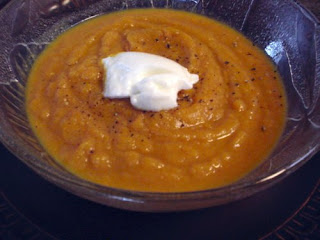Amaranth was revered as a staple food source, but it was was also used in Aztec rituals of human sacrifice. For this reason it was almost completely wiped out by the Spanish conquistadors who destroyed its crops in hopes of ending the practice of human sacrifice.
Luckily in a few remote areas of South America this six-foot tall, colorful plant, with its edible leaves and nutritious seeds, was grown and harvested in secret and therby preserved. It is now cultivated and eaten around the world.
It can be cooked as a cereal, puffed and popped like popcorn, or added to soups and stews as a thickener. It can also be ground into flour but because it is a seed it contains no gluten. Therefore, this type of flour must be mixed with glutinous flours to make any kind of leavened bread.
It is high in the amino acid lysine, and also in calcium, magnesium, and iron.
I decided to try it and purchased some from the bulk bins at the local Planet Organic market... it sat on the counter in its little plastic baggie until I finally got brave enough to pop it, and serve it for breakfast.
I would recommend that you put a lid over the saucepan when you pop it, otherwise it
About 1/4 cup of the small raw seeds
Makes about 2 cups, after popping
The popped seeds are light and crunchy and have little flavor
But make a lovely breakfast with berries and ygourt
2 Tbs raw seed yields about 1 cup after popping, and that is plenty for breakfast.
Weight Watchers P+ = 2.
Calories 91; Protein 4g; Carbohydrate 16g; Fat 2g; Fibre 4g

















































